Photo: Daniel Gajdamowicz
(Editor’s note: This is part two of PSP’s look back at John Hackworth’s first year as head coach of the Union. For part one, click here.)
Major League Soccer asks a lot of a coach. The league’s relative parity means that few managers can go out and buy the perfect players for their ideal tactics. Success means making the most of the imperfect hand you are dealt, but when everybody has similar cards, the little things matter.
Coaches that find extended success in the bruising, unpredictable world of MLS do the little things very well. Bruce Arena adjusts his basic formation to give Landon Donovan space, pushing his playmaker inside, far up the pitch, into any gap. Dom Kinnear overloads the wings just outside of the box, waiting for the inevitable foul that lays the groundwork to the inevitable Brad Davis assist. Jason Kreis keeps his formation so tight, and the ball moving so fast, that a disorganized high press overruns the play and watches in horror as Real Salt Lake manages to once again push their holding midfielder to the edge of the opposition penalty box.
These coaches, who win by outthinking the high press on offense and out-organizing the counterattack on defense, embody the level of success Philadelphia Union hoped to reach under Peter Nowak. The man who led DC United to the promised land was given full control of a long-term project that measured success in playoff wins, not playoff appearances.
Nowak failed.
Enter the Hack
In June 2012, a man with no professional head coaching experience took his place. Up to this point, John Hackworth had been considered the youth guru that would guide a young team to early maturity. Whether he had lost Nowak’s trust in this role was an open question, as teenaged draft picks Danny Mwanga, Jack McInerney, and Amobi Okugo rode the pine behind veteran arrivals like Carlos Ruiz, Lionard Pajoy, Gabriel Gomez, and Josue Martinez.
New head coaches like to make a statement with their first lineup. Shake up the formation, move the star player around, bring someone in from the cold. Hackworth did these things, and the results were positive, even if the scorelines were not. Since announcing his first 11, John Hackworth has been loyal to a core of exciting, young players and a pair of workmanlike vets. He has purged the roster of his predecessor’s pets, though he has yet to replenish the bench with trusted depth.
More than a youth coach?
After one year, John Hackworth fits his pedigree: He was a youth national team coach, and he has a young team that plays their age. That they play with the brash aggressiveness that supplies both a naive confidence and a confident talent speaks well of Hackworth’s abilities as an individual communicator and motivator. That they play with a consistently underwhelming sense of positioning and organization gives volume to the whispers that Hackworth is less a leader than the skilled foil of a disciplinarian.
Although he was handed a team that needed to be stripped bare before it could be reclothed as his own (and though he has shown more tactical flexibility than he might admit), John Hackworth appears to have done little more than hand the stage to the performers who deserve it. Over the next four months, he must teach them to dance together.
Formation changes
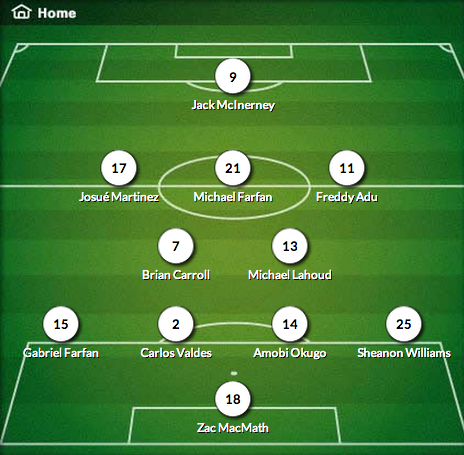
Hackworth’s formation his first match. (Nice try, MLSSoccer.com. We know a 4-3-3 when Hackworth tells us what it is.)
The John Hackworth era began with the Union shedding the drab 4-4-2 (though assigning numerical descriptors to the helter-skelter lineups of Peter Nowak was like breaking down the flavor palette of a Bud Light, but less fun) and going all in on a 4-3-3.
A 4-3-3 connotes sexy, attacking soccer with copious wing play, overlapping fullbacks, and a spritz of total football to give the whole thing a legitimate historical backbone. In reality, the 4-3-3 is a 4-5-1 for every team that doesn’t have a central midfielder capable of controlling possession through short passes and stretching a defense with longer ones. (You’re thinking of Xavi, aren’t you? I knew I’d catch you thinking about Xavi.)
The best proponent of the system in MLS is Kansas City, though LA can pull it off very effectively when they play to counter. Lacking a control freak in the middle, the 4-3-3 effectively sucks the wingers deep to receive balls up the line from fullbacks. This makes the edges of the pitch claustrophobic for anyone who likes to dribble (now I caught you thinking about Freddy Adu) and the sexy attacks give way to an offense that can’t get a player on the ball facing forward without playing punt and pray.
Early returns
This was John Hackworth’s Philadelphia Union early on. The lineup against DC United on June 16th “featured” Josue Martinez and Freddy Adu as public service announcements on how to be ineffective with your back to goal. Michael Farfan continued his ill-fated learning process in the middle of the pitch, and Amobi Okugo pushed Sheanon Williams back out to right.
The Okugo and McInerney moves were both obvious and surprising. They seemed logical, yet that alone made them anathema to fan expectations.
Over the past year, the constant presence and continued development of those two players has proved that John Hackworth was the right manager to step in when Peter Nowak was fired. Whether he is also the man to take the Union to the next level rests on a facet of Hackworth’s leadership with a murkier track record: His ability to buy and teach new players to excel in his system.
Calling the Union’s current style John Hackworth’s system is a bit disingenuous. The manager made clear that he wanted his team to play quick, controlled, possession-oriented footy. The tactics that have the Union in the playoff hunt are not that.
2012 evolution
The 2013 Philadelphia Union’s tactical approach was shaped by the bumps, bruises and breakouts of 2012. Early in Hackworth’s tenure, the team really did play a calmer, small ball game. The loss to DC United that marked Hackworth’s entry into the head coaching world featured a team willing to move the ball patiently and wait for opportunities. It would appear that nobody told the Union what those opportunities would look like, however, and they slumped to a sucker punch loss.
Against Sporting Kansas City, an early goal let the Union play on the front foot and, again, with patience. This time Philly was rewarded with a 4-0 scoreline.
For the first month, Hackball was about controlling possession and finding ways to overcome odd bouts of Finalthirdaphobia. The pinnacle of this period was the 3-0 win over Toronto—a fine bookend considering a loss to Toronto prompted Hack’s appointment—in which the Union played 198 more passes than their opponents.
The next week’s win over Montreal, amidst bullying, headbutts, and red cards, marked a change in the Union’s approach. Whether it was the Impact’s physical style or simply a response to opponent’s trying a higher press, Philadelphia lost their possession dominance and began looking to counter more frequently.
The team entered a ten-game stretch in which they only garnered points from matchups with New England (blech) and Toronto (blech, eh).
On September 23rd against Houston, following a dispiriting loss to Lio Pajoy and DC United in which the Union dominated the ball, the elements that have marked the 2013 team began to emerge.
A 4-3-3 with Josue Martinez between Freddy Adu and Danny Cruz gave the Union plenty of speed to counterattack. Michael Lahoud finally stepped forward to play slightly in front of Brian Carroll, allowing the team’s defensive specialist to return to a full coverage style he prefers. Freddy Adu tucked inside often, essentially giving up the wing and opening an outlet for long balls. The Union were officially content to boot it long out of trouble, but they were trying to do it on their own terms. Danny Cruz played high up the pitch and stayed wide, threatening the defense with speed and, hopefully, allowing Philly to surprise an opponent with a break without pulling the main striker from the middle of the pitch.
The defense was good, but not great.
These tactics have come to define the 2013 Union, though Hackworth has complimented them with a few twists, courtesy of Conor Casey and Sebastien Le Toux.
2013
Casey and Le Toux play the same role in completely different ways. Le Toux has shown considerable personal growth to fit himself into Jack McInerney’s shadow as an early runner and decoy. McInerney can read Le Toux’s checking or wide runs and slip into the gaps left behind. In contrast, Casey stays front and center, winning aerial battles, establishing a presence in the center of the pitch that forces the defense to get narrow, and opening spaces between the center backs and wide players.
Brian Carroll has officially been given full control of the midfield, and any partner is expected to be a creator rather than a fellow destroyer. While Carroll has slowly found his footing again in a familiar role, nobody has stepped into the breach alongside him to provide the complementary offensive distribution. Keon Daniel’s low confidence is evident in his deep positioning, while Michael Farfan’s lack of self-belief manifests as a hesitancy to come get the ball and play the necessary short passes that open space for the home runs.
Returning Carroll to his deep-lying role and bringing in Conor Casey suggest that John Hackworth has begun adjusting to the players he has. His tactics are so built around the counterattack now that opposing players will openly use Philly as an example of a team built to sit back and play to exploit mistakes.
This is not the Philadelphia Union John Hackworth claimed he would create, but a purging of the Nowak signings paired with Hack’s commitment to known and favored quantities has created the current situation. The dirty little secret is that Jack McInerney’s almost unprecedented early season scoring run has pasted over the roster’s clear lack of depth and creativity.
Looking ahead
After one year, John Hackworth has not given Philadelphia the wide open, three-striker system many expected to mark the first time coach’s reign. Instead, the team is fast, narrow, disorganized, and inconsistent.
Hackworth’s defenders will argue the coach can’t put his tactical stamp on the team until he brings in his own set of players. Detractors will wonder why those players are not already on the roster and why the current crop doesn’t appear to have a clear sense of purpose so much as an understanding that they have enough leash to make mistakes and learn from them.
In the end, both defenders and detractors should agree that John Hackworth has been exactly what he appeared to be one year ago: A coach skilled at individual motivation but with clear shortcomings in his ability to design and implement larger tactical strategies.
If the Union appear to play like the team you played against growing up that dominated local tournaments with pure, untaught talent only to struggle against anybody in their own weight class, that is because they are that team. Allowed to express themselves, Jack McInerney, Danny Cruz, Amobi Okugo, Sheanon Williams, Ray Gaddis, and Michael Farfan show glimpses of the skill and intelligence that have won them awards and plaudits at every level. They have also made mistakes, put their heads down, and taken an approach that relies more on their unquestioned abilities than a mature, developed understanding of the game.
Hackworth has given the players the confidence to challenge any team in any week. He has yet to teach them how to impose themselves on a game and control tempo and transition from defense to attack in a way that allows for sustained pressure in the final third.
After one year, the only fair assessment of John Hackworth is that he is extremely effective as a motivator but less so as a teacher. He can bring out the best in a group of individuals, but he hasn’t yet shown that he can turn those individuals into a team.
Hackworth has righted the good ship Union. He has just under four months to show that he knows how to steer.
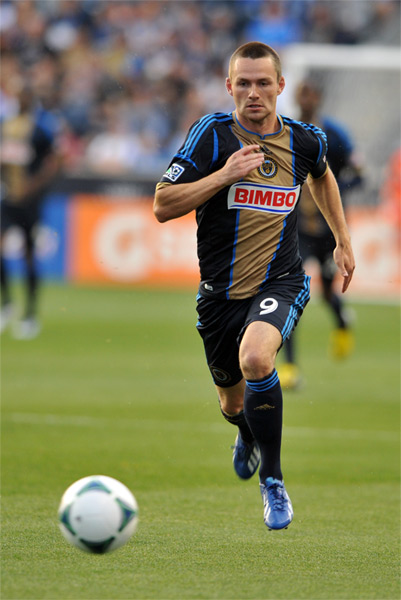
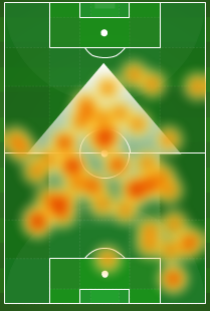
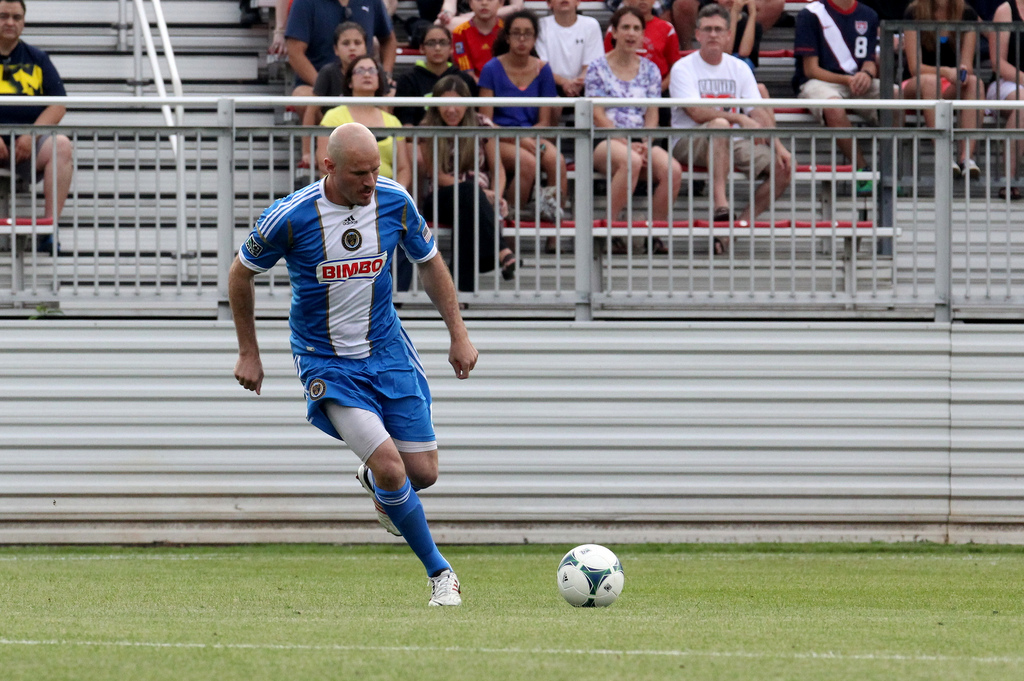
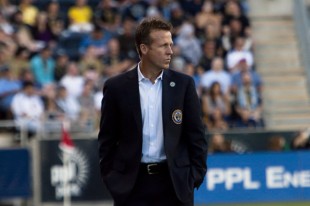

Great read and I agree completely. This article is a good example of how the best criticism is insightful without being too deferential or insulting.
Very well said, I really agree with almost everything said here about Hackworth’s strengths and weaknesses.
.
His biggest weakness to me is his basic resistance to making changes with certain players to keep fresh legs, jar players set in their ways, and keep opponents on their heels. This weakness paved the way for the departures of Soumare and Garfan, which leaves the team in it’s current state, where there is no one left to turn towards on the bench (not that Hackworth would turn towards them anyway).
Good article, Adam. Both you and Dan have highlighted some key points to Hackworth’s managerial reign, that often get overlooked. However, both articles skimmed over the dark side of John Hackworth (lack of creation, failure to address weaknesses, refusal to admit fault, failure to adjust when something clearly isn’t working, leaving quality players for dead, talking out of both sides of his mouth, providing little in regards to the direction of his club, selling players and then trying to get the same player back, rendering his club without depth in almost every position, etc, etc, etc…). Those issues aside; this article, as well as Dan’s, were very well written and I thank you both.
Am I missing something? When did he sell a player and then try to get him back?
Union sold Soumare and then said they were looking to obtain a defensive depth player, who could possibly start. We could have kept Soumare and not been on the hook for a portion of his 2yr salary (with Chicago) + the cost of acquiring another defender. It’s bad business, from a club that has monetary troubles.
When you add up the amount of money tied up with Adu, Kleberson & Soumare, you get a real sense of why we are in monetary trouble. I’m not saying that Hackworth has been the main culprit behind these “deals” but he is involved and they have all been SHITE.
TBH: Soumare requested a trade. You can’t keep a player that doesn’t want to be here.
Kleberson’s been fine when he plays.
Soumare requested a trade because he wanted to play…anywhere. If he would have been given the opportunity, Soumare might have been more than happy to play for the Philadelphia Union. If Jack Mac had his trade request fulfilled, would that have been the right decision??? Nowak would only have been following your logic. Was Nowak’s not playing Jack different to Hack’s not playing Soumare? A player, beyond all else, just wants to play…or at least should.
.
Kleberson was a welcomed change from our midfield, but that is not saying a whole lot. There have been good and bad aspects to his game. His wages, coupled with the price we are still paying for Adu, sure are steep!! I don’t know that we are getting a return.
.
I apologize for my long windedness. I find drawn out opinionated blabbering to hold cathartic qualities.
“failure to address weaknesses”
To be fair,this past offseason we needed a new CB and some size upfront. Hack must have had something to do with bringing in Jeff Parke and Conor Casey, both of whom I think we can say have been successes.
Parke’s newborn brought that transfer. He wanted to be close to family.
Casey was a good move. Credit goes to Hackworth for that.
I give Hack partial credit for Casey. It was a low risk/high reward pick in the Island of Misfit Toys draft. He was coming off a lot of injuries and a high salary. Hack could offer a chance for quality minutes to show Casey was healthy enough to deserve a higher contract when this one expires.
However, depth again is brought to the fore. It’s not hard to envision Casey re-injuring the leg with the way Hack does not turn his lineup over, and if it comes in the middle of the stretch wen Jack will miss time for the Gold Cup, enter the Hopp.
Can we get a fashion report for John Hackworth next?
Look I know coaches gotta wear blazers and all but he always looks like he is wearing his dads clothes or something. We should get Ray Gaddis on the case.
Even his blazers are playing out of position.
Sieve wins the thread. Again.
Hack is boring in all aspects: dress, tactics, and personality. Is he a good guy? I guess so. Is the worst coach ever? Probably not. But is he the worst in the MLS? With the talent he has/had, probably. Only Ben Olsen has a had a worse showing this season. The current style is Hackworths style, regardless of what he proclaims. Look at Porter. Portland is essentially the same build of a squad…except w/ a vet goalie.
Thanks for the Analysis though Dan. Obviously we all love this site and the insight and discussion you all create, including the standard posters above.
Portland isn’t a great example. They added some key pieces in Will Johnson, Diego Valeri, Michael Harrington, and Ryan Johnson. Porter did influence the “press high” tactics of the Timbers, but they wouldn’t have been the same team without making those good moves in the offseason.
Very well reasoned analysis. Overall, I think it is difficult to assess him as a tactician until we see him develop a more complete roster. At the moment, he seems to be trying to grind out results with what he has.
I think him being wedded to players like Cruz is an attempt to use work rate as a means to coverup the other deficiencies in the roster. I will say the team’s work rate was abysmal in the Open Cup vs. D.C. when Cruz was unavailable. His presence does pick up the pace of those around him. LaHoud can have a similar effect when he is available.
Having watched him coach at USF, his college side was a talented bunch capable of playing possesion football through the center and opening space down the flanks. They were quite solid defensively and kept a decent defensive shape.
But in the post Jeff Cunningham years, he was able to recruit a strong roster. He certainly doesn’t have that now.